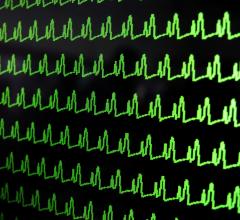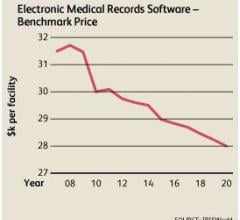The implementation of an electronic medical record (EMR) to convert from a paper chart record system to a high-tech paperless system can take a large investment of time and money and years to complete. Healthcare Information and Management Systems Society (HIMSS) Analytics measures the progress of a hospital’s using a seven-stage scale it calls the EMR adoption model.
Stage one includes hospitals that have installed electronic EMR systems in its primary ancillary departments the rest of the hospital relies on – the laboratory, pharmacy and radiology departments.
Stage two includes connecting major ancillary clinical systems to feed data to clinical data repository (CDR) that provides physician access for retrieving and reviewing results.
Stage three includes clinical documentation installed (e.g. vital signs, flow sheets, nursing notes, care plan charting, and/or the electronic medication administration record (eMAR) system are scored with extra points and are implemented and integrated with the CDR for at least one service in the hospital. The first level of clinician decision support is implemented to conduct error checking with order entry (such as drug/drug, drug/food, drug/lab, conflict checking normally found in the pharmacy). There is also some level of medical image access from picture archive and communication systems (PACS).
Stage four includes implementing computerized practitioner/physician order entry (CPOE) for use by any clinician and second-level clinical decision support related to evidence-based medicine protocols.
Stage five includes creating a closed loop medication administration environment that is fully implemented in at least one patient care service area. The eMAR and bar coding or other auto-identification technology, such as radio frequency identification (RFID), are implemented and integrated with CPOE and pharmacy to maximize point-of-care patient safety.
Stage six includes implementing full physician documentation/charting using structured templates for at least one patient care service area. A full complement of radiology PACS systems is implemented with all images, both digital and film-based, available to physicians via an intranet or secure network.
Stage seven is the final goal of any EMR implementation, which is a paperless EMR environment where clinical information can be readily shared via continuity of care electronic transactions with all entities within health information exchange networks (including other hospitals, ambulatory clinics, sub-acute environments, employers, payers and patients). Also at this stage, HCOs use data warehousing and mining technologies to capture and analyze care data, and improve care protocols via decision support.
Even at the the lower adoption stages below stage four, Mike Davis, executive vice president of HIMSS Analytics, said clinicians are still getting more information than they had available using paper charts. This is because the current state of the patient is automatically dumped into the patient record directly from monitoring devices, faster transcription times, nursing notes. lab results, radiology and other electronic sources. He said this extra information helps lead to better clinical decisions. In addition, he said immediate access to the EMR from any computer helps increase staff efficiencies.
At stages four and five, Davis said hospitals integrate CPOE systems, bar-code devices and medication management systems with the patient EMR and use the five rights for medication management.
“That’s where you really see big increases in patient safety,” Davis said. “They showed incredible improvements in things like on-time medication management. They are also pretty much eliminating medication errors.”
However, only about 2 percent of U.S. hospitals are at stage five, and only about 1 percent of hospitals are at stage six. For that reason, Davis said it is difficult to gage national trends in terms of patient safety increases with such a small number of hospitals. However, he said the statistics from those hospitals that are at levels five and six show significant patient safety statistics. Davis said these hospitals definitely saw drops in the number medication errors and incidence of hospital-acquired infections.
To get from stage one to stage six usually takes a hospital about seven years to achieve, because Davis said each new addition of technology must be integrated into hospital workflows, the staff must be trained, and it takes time to work the glitches out of the system.
In most cases, hospitals are finding mistakes with bar-code and CPOE systems they never caught before. Davis said this is a good example of the fact it is difficult to gage the true return on investment for implementing EHR technology, especially bar-code systems and CPOE, because errors are not always recognized or reported before these systems are used. For this reason the true extent of errors is not really known. In any case, he said these systems have proven very useful at decreasing overall errors and increasing patient safety.
New technology adoption at stage five and six hospitals also helped deceased transcription times from eight to 12 hours down to less than an hour, which aids patient care, David said.
“When you have data coming back that quickly you can make much better decisions,” David said.
Adoption of EHRs and supporting technologies is being driven primarily because hospitals what to have better patient outcomes. Better outcomes also act as a marketing advantage to help draw more patients as healthcare becomes more consumer driver.
“If I had to go to a hospital, I want to go to one with these systems in place,” Davis said.
Better outcomes and better technology to help improve workflows also helps attract good clinicians to these hospitals, he said. In the future, pay-for-performance programs and non-reimbursement from Medicare and Medicaid for hospital errors or hospital–acquired conditions or infections will make the EMRs and their goal of increasing patient safety even more important.
“EMRs will be a requirement for hospitals to compete in the future,” Davis said.
For more information: www.himssanalytics.org


 June 14, 2024
June 14, 2024 








